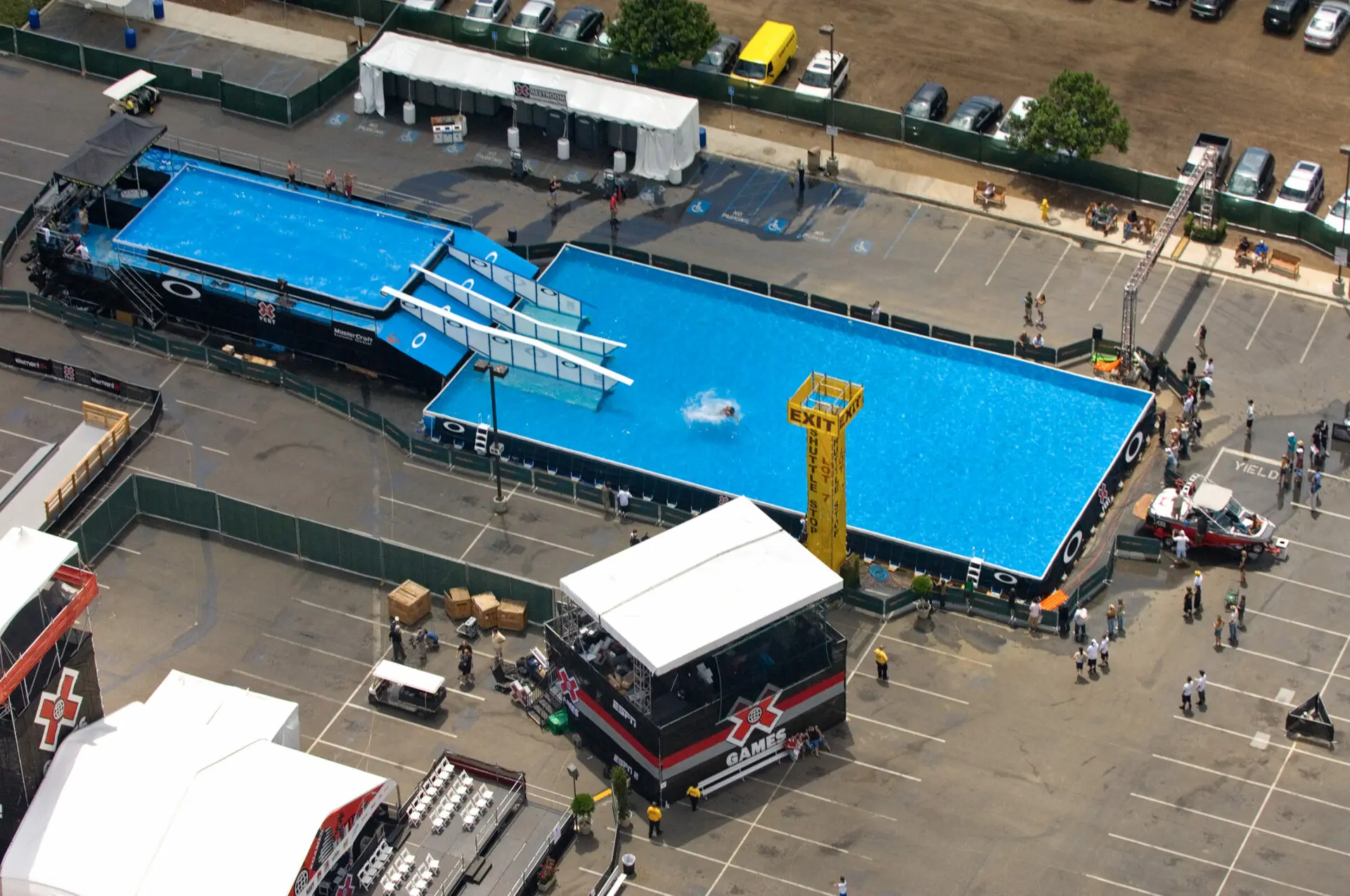When we think of swimming pools in everyday life, in this context we must consider commercial pools as well as residential pools. Many types of pools used regularly, from the ones found in hotels to the ones in leisure centres, are commercial or public swimming pools.
What are the key types of commercial swimming pools? And what are their characteristics?
Read on to find out about:
- Competition pools;
- Pools found in sports clubs;
- Hospitality and real estate commercial pools;
- Wellness centre pools;
- Municipal / public pools;
- Water park pools; and
- Special event pools.
Dive deeper with the eBook
Competition pools
These aquatic facilities are built specifically for hosting special sporting events and comply with World Aquatics regulations (former FINA Facilities Rules) in order to deliver a safe and optimal experience for both athletes and the spectators and judges. Competition pools are not just for swimming events: they also include sports such as water polo, artistic swimming, diving and high diving.
The gold standard for competitive swimming are Olympic pools, used for most competitions, from local to international. They have to be 50 metres long and comply with a range of World Aquatics regulations in terms of the water depth, competition accessories, water conditions, etc.
The Semi-Olympic pool, of 25 metres and also called short course pool, complies with World Aquatics regulations and can be used for competitions, although less frequently. It’s also a good size of pool to include in sports centres and municipal swimming centres, for athletes to train in, while not sacrificing too much space.
Water polo pools are designed for practising said sport, where swimmers must stay afloat at all times. However, it’s common for water polo competitions to take place in Olympic pools which have been adapted by using ropes to delimitate the standards of a water polo field and the required competition accessories.
Diving and high diving pools
A diving pool is designed for the practice and competition of jumping, trampoline and platform dives. Diving pools are usually found in large sport complexes or sports clubs for high-level training purposes as they have to comply with special sizes, accessories and depths requirements for the athletes’ safety in competition.
High diving is closely related to the discipline of platform diving as many of the same skill sets are equally used. The basic difference between diving and high diving is the additional height and the fact that high diving athletes land feet-first. Heights are 20 metres for women and 27 metres for men.
Artistic swimming pools
Artistic or synchronised swimming is an individual or collective competition that usually takes place in competition pools that must comply with a series of adaptable requirements, although sometimes temporary pools are directly assembled for this sport.
Warm-up pools
A warm-up pool is specifically designed for athletes to prepare for competitive training before or during a competition. They commonly have a rectangular shape and feature competition accessories as well.
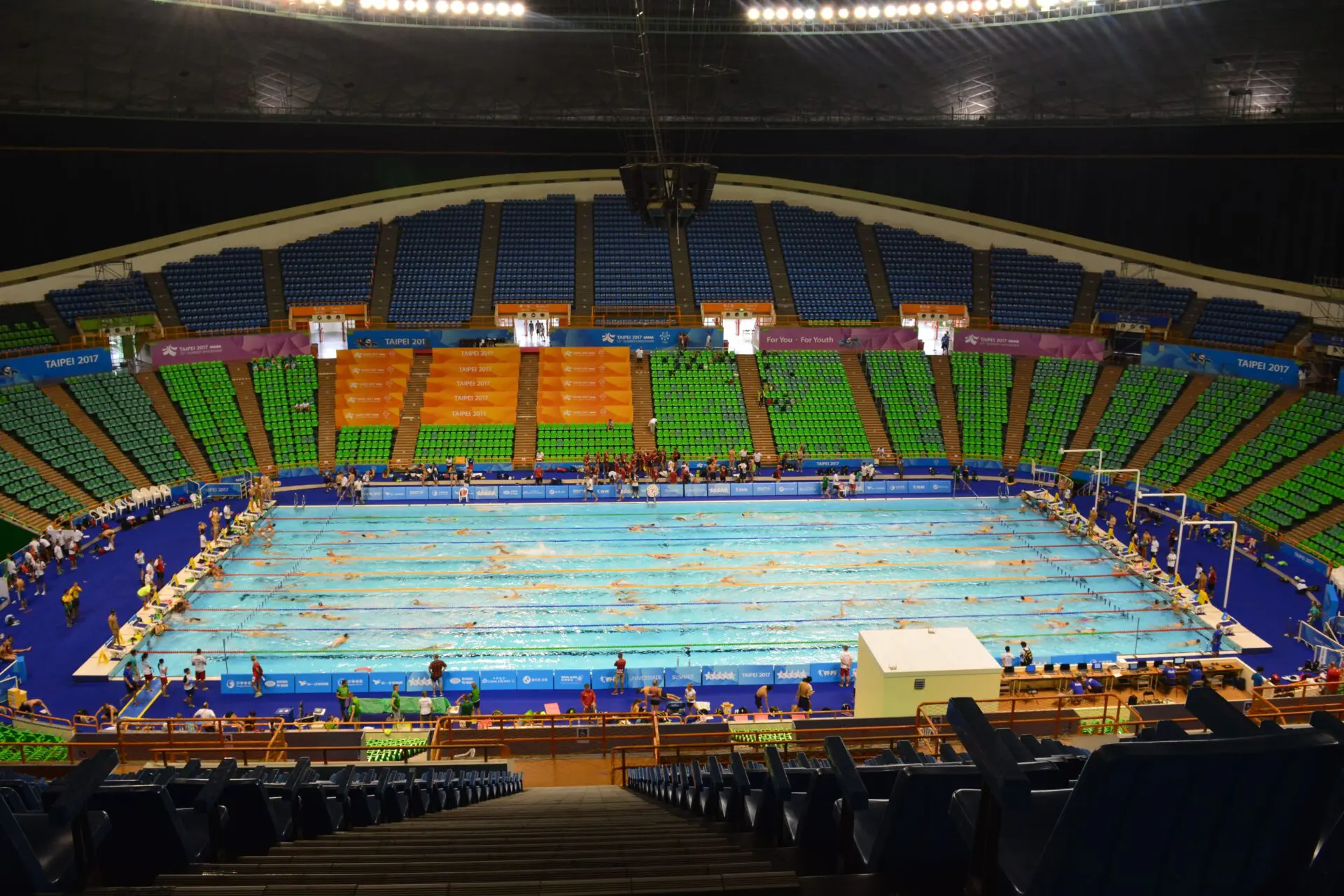
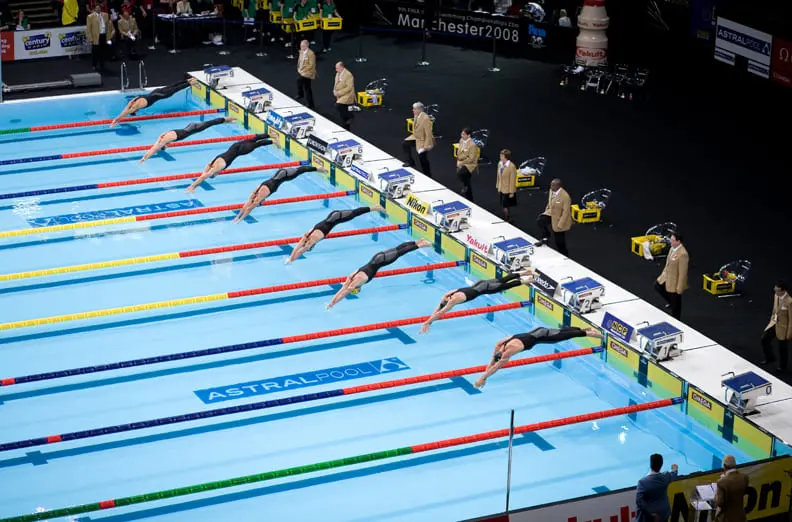
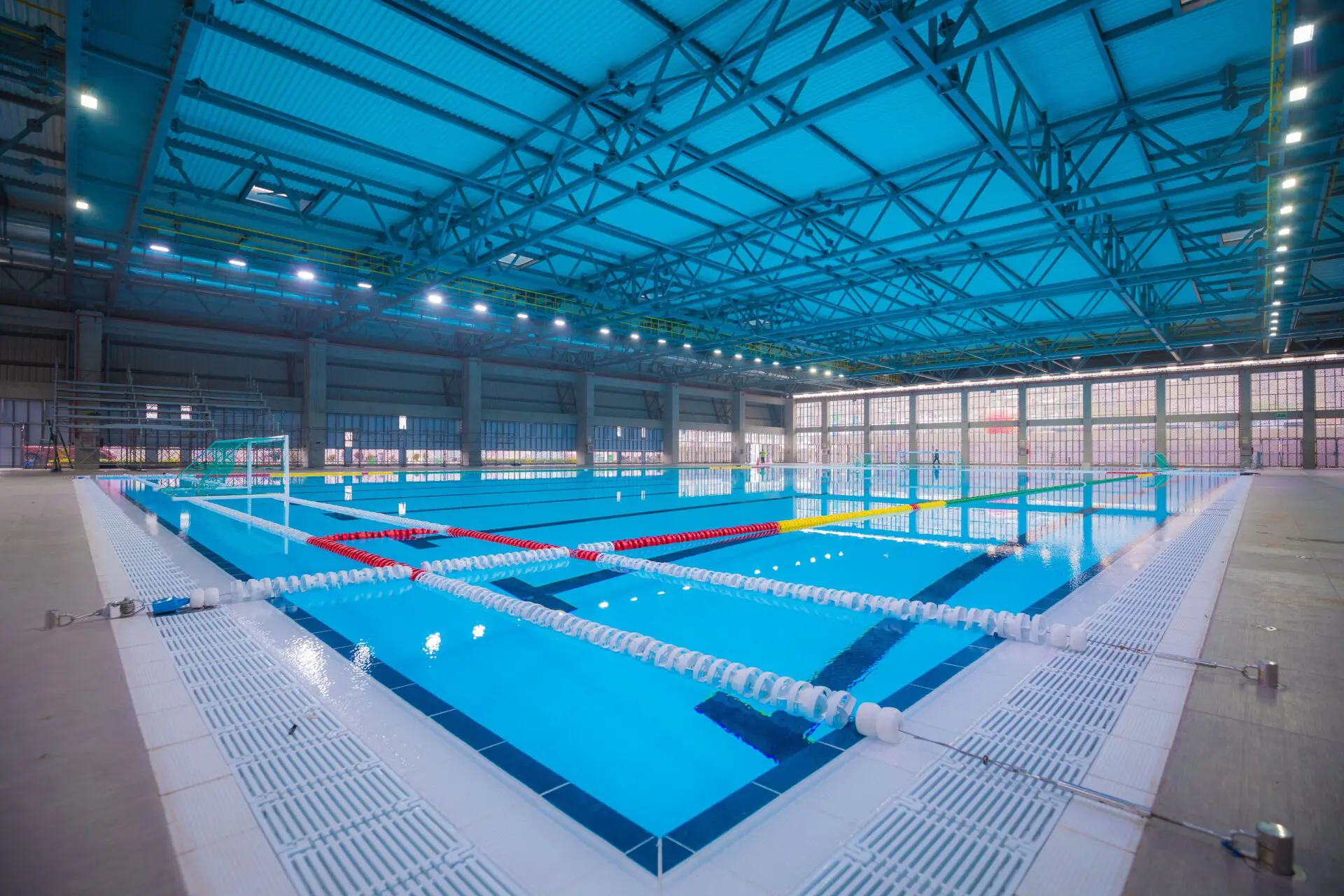
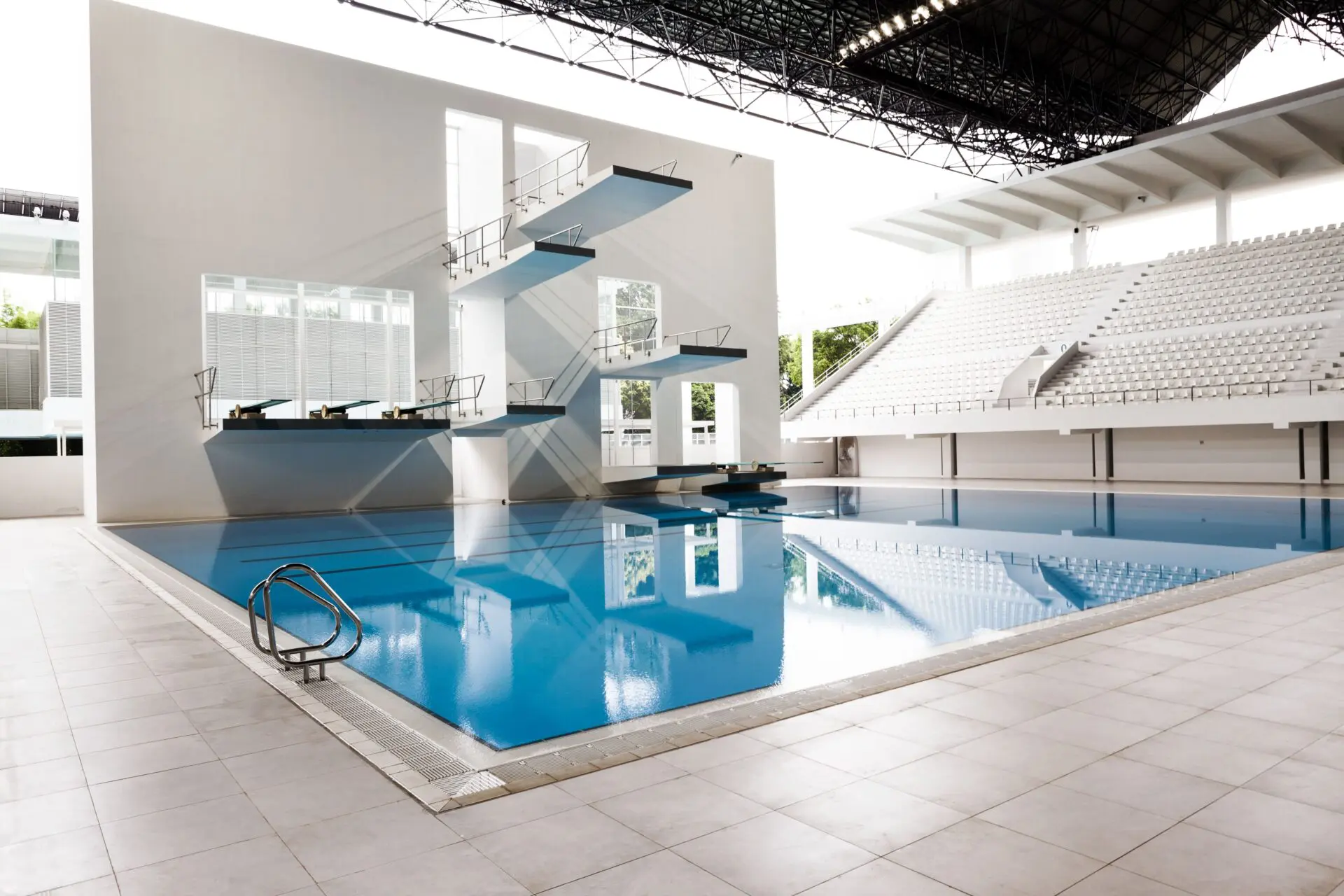
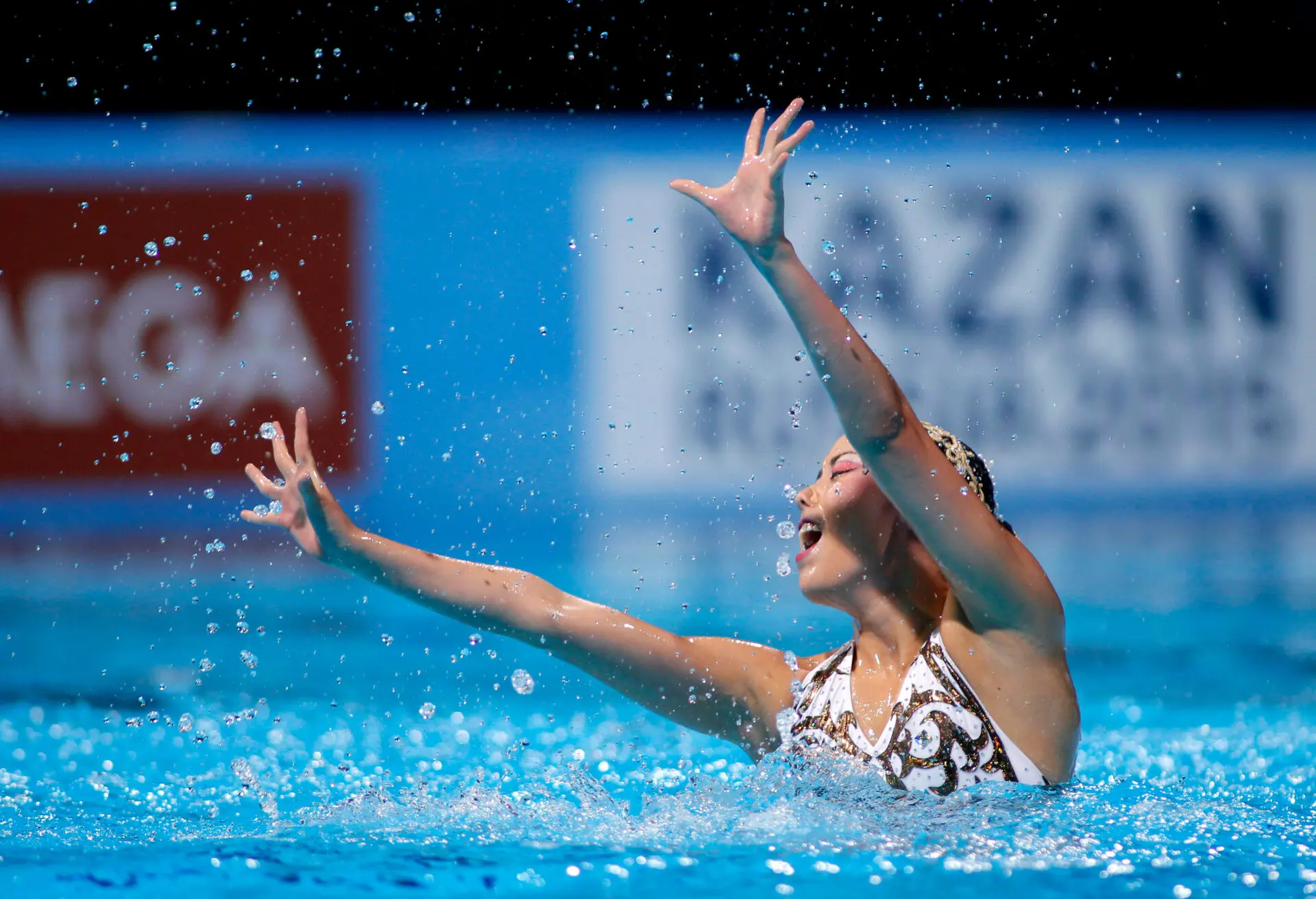
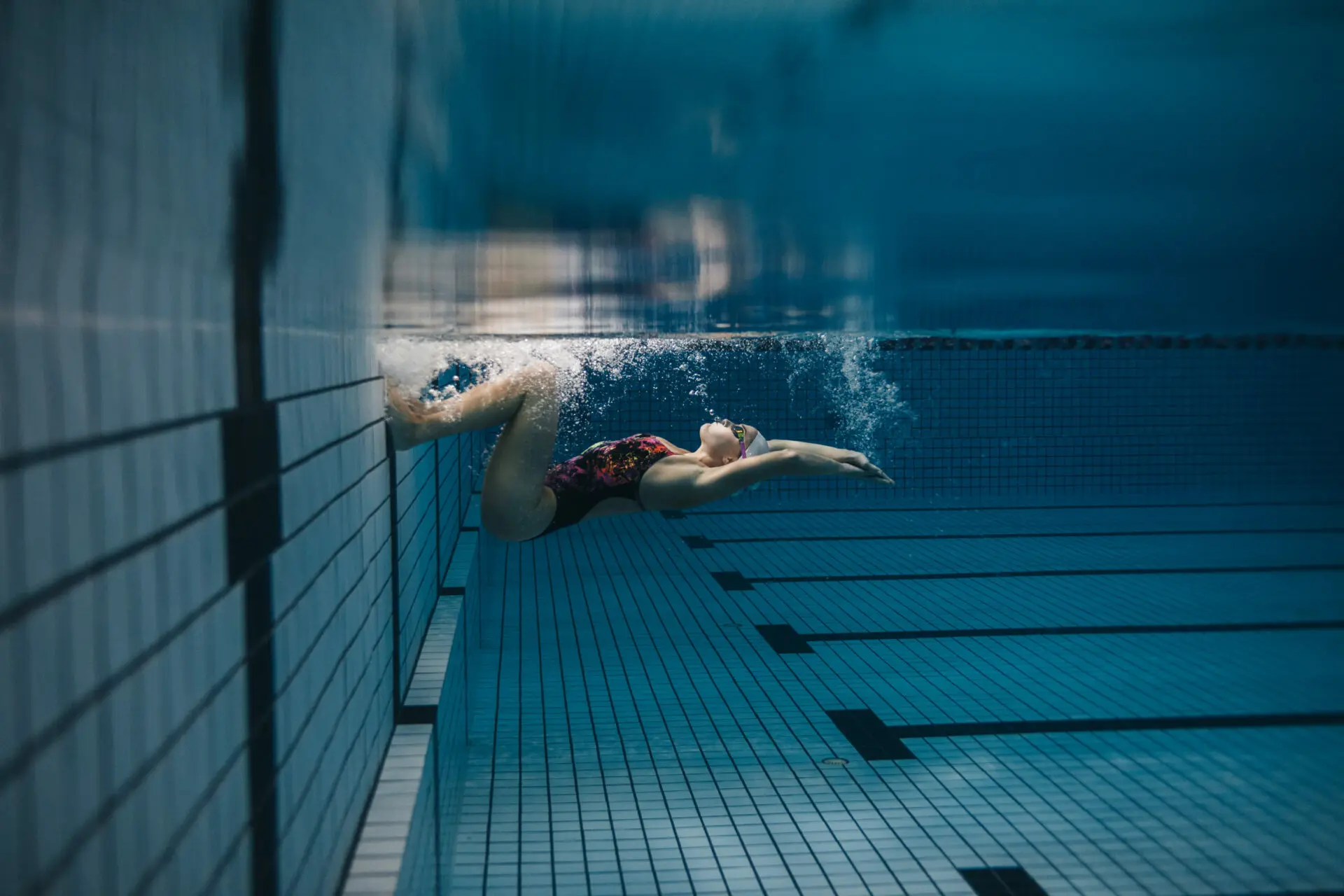
Sports club pools
As sports clubs are open for athletes and leisure swimmers seeking to workout and train regularly, their pools have many similarities with competition pools. However, as they are not meant to host events, they don’t have to comply with the same World Aquatics regulations.
A lap pool has a rectangular shape and various size configurations. They are usually present in sports clubs, gyms and fitness clubs. Its main goal is to provide a space for day-to-day training, such as individual free-swimming or collective swimming lessons. Lap pools can also be used for other healthy activities, such as physical rehabilitation programs or muscle training sessions.
Olympic pool & Semi-olympic pool
As we have seen, olympic and semi-olympic pools are usually found in official competition events regulated by World Aquatics. On other occasions, these pools are also found in high-level sport centres to train athletes, such as the CN Sabadell (Spain) .
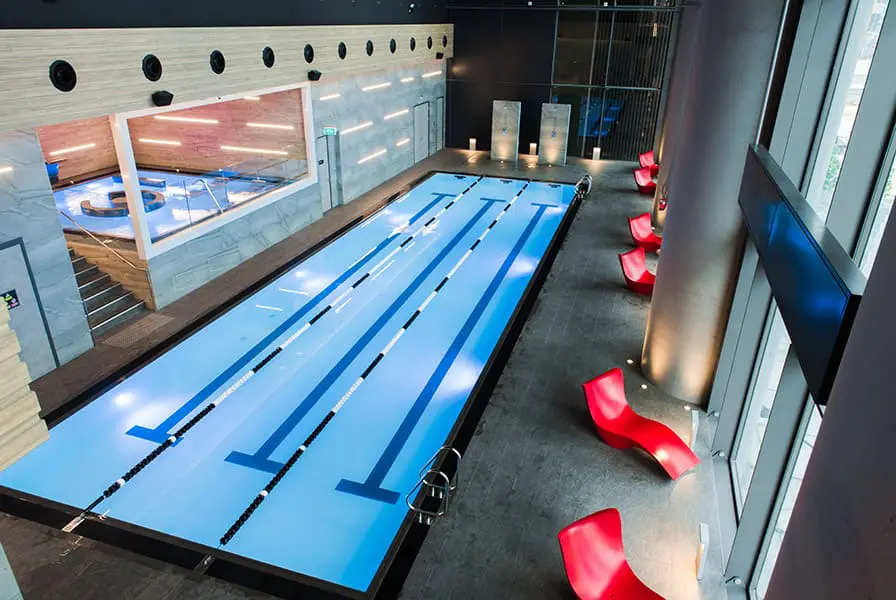
Hospitality and real estate pools
Hospitality and real estate pools can be found in a wide range of designs, sizes, shapes and potential uses, although their main purpose tends to be leisure. The aim is to provide an idyllic place for guests, while also boosting the economic performance of a hotel or resort, or increasing the value of a real estate property. Just like sports clubs, hotels and resorts may also include wellness pools for guest relaxation, recovery or activation of the body as needed.
An infinity pool is a trendy aquatic facility for leisure, normally found in hotels and resorts rooftops and outdoor terraces. Its main feature is that the water blends into the horizon as it flows and spills over the edge into a hidden overflow channel under the water level.
Rooftop pools are stylish aquatic solutions located on rooftops of buildings. Providing prime views of both natural landscapes and cityscapes, they add exclusivity and commercial value while making the most of what otherwise might become an unused terrace space.
Glass pool
These pools made of glass or acrylic material walls are an attractive feature that sets them apart from the rest, as their transparency eliminates any visual impact. They manage to retain water effectively while allowing to see through and illuminate the pool with natural sunlight.
Leisure pool
These multifunctional spaces tend to be reference points or leisure spaces for hotel and resort users, and can provide a great number of activities. Usually being of large sizes and various shapes, leisure pools are surrounded by many adjacent businesses and can be established as the hotel main attraction and branding point. Another trend to enhance these aquatic spaces is the thematization for a more memorable and immersive experience.
Above-ground pool
This easy-to-install Plug & Play solution is ideal for private terraces and hotel suites. They have a minimalist and elegant style that makes them blend perfectly with the architecture of the hotel, creating an exclusive and private space that increases the average room rate.
Inox pool solutions embrace the exclusivity and design appeal of stainless steel. This material has aesthetic qualities, hygienic properties and corrosion resistance. It is a highly attractive and innovative option for creating unique, distinguished and elegant spaces for hotels, resorts, and also sports clubs and wellness spaces.
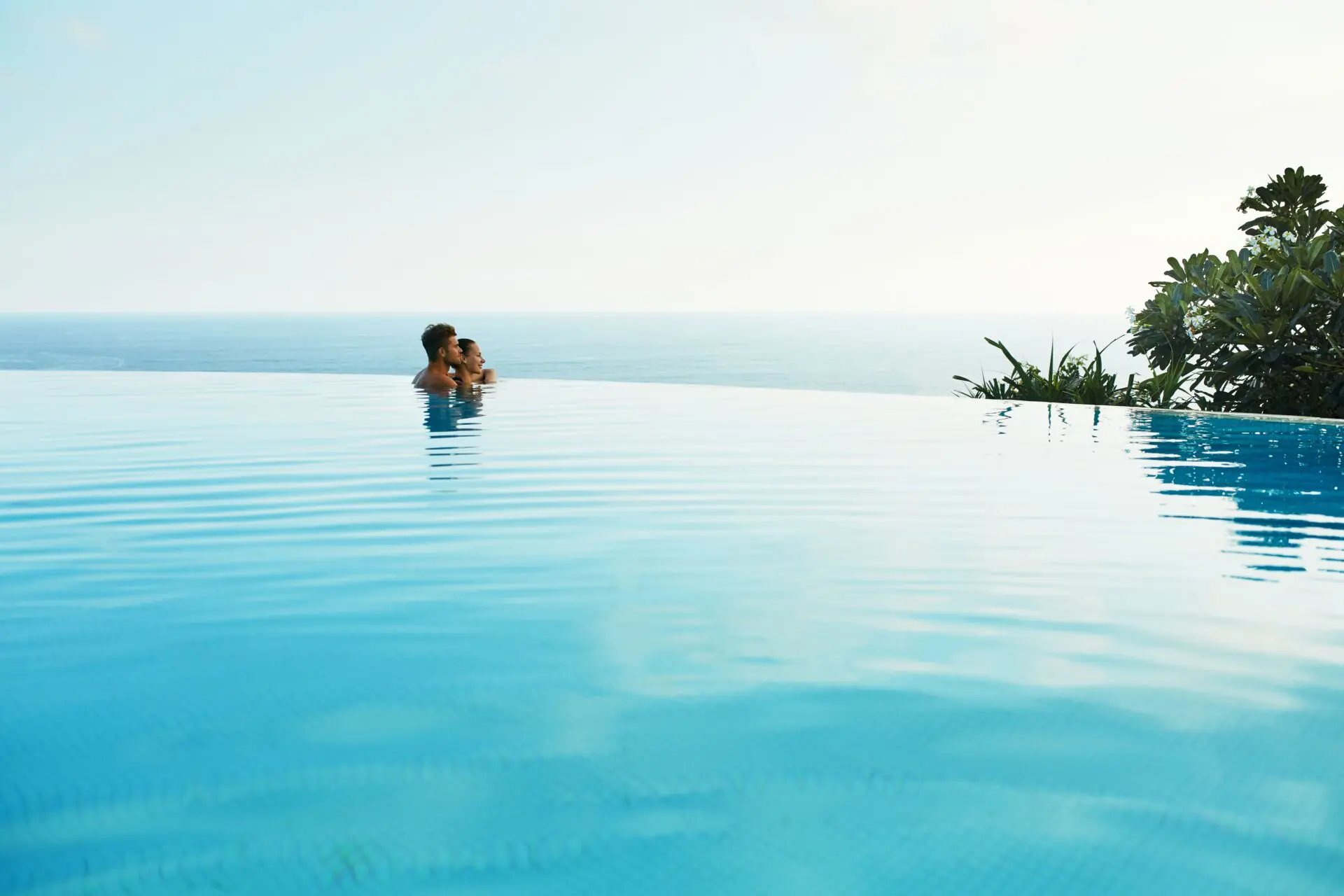
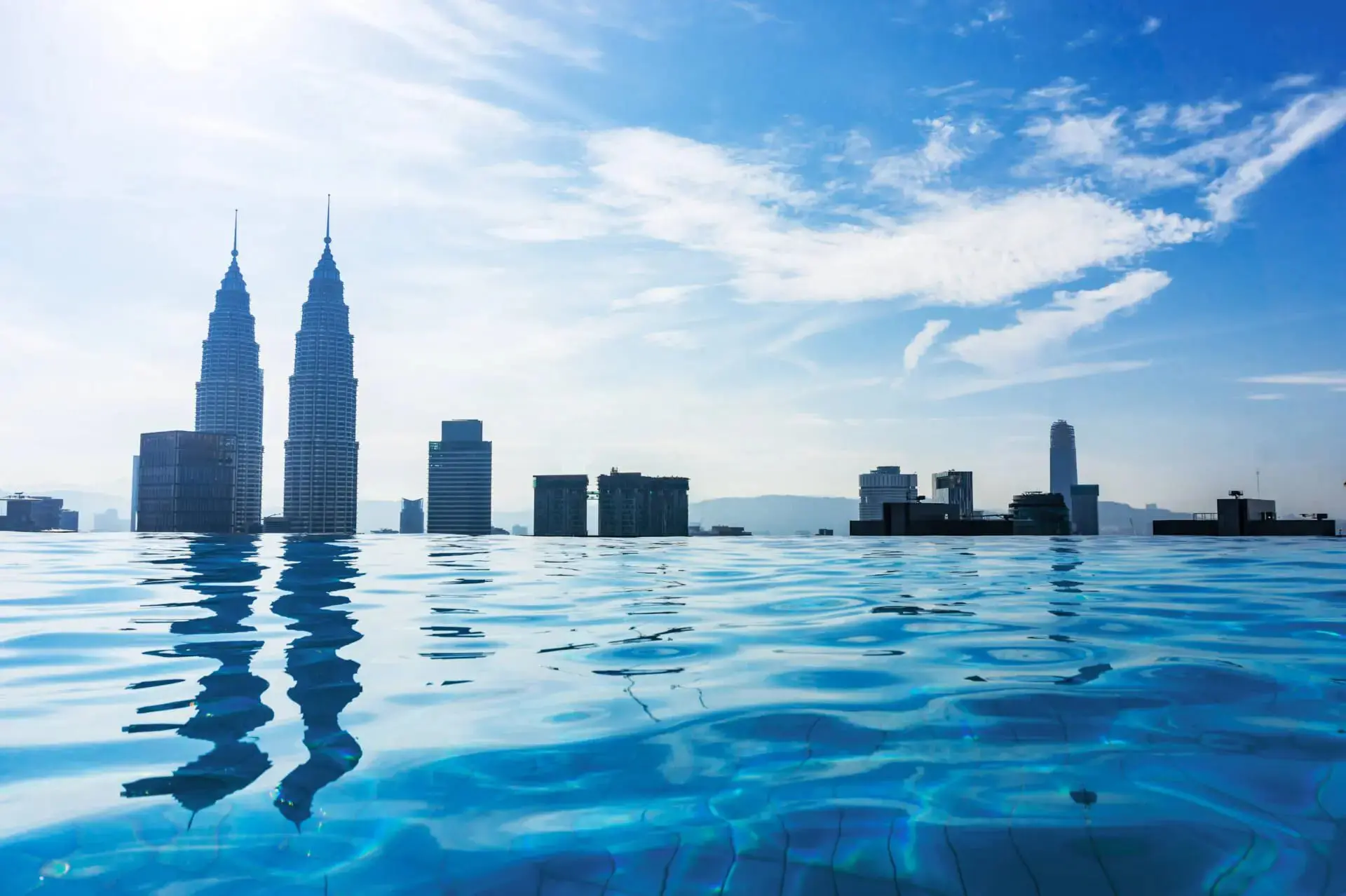
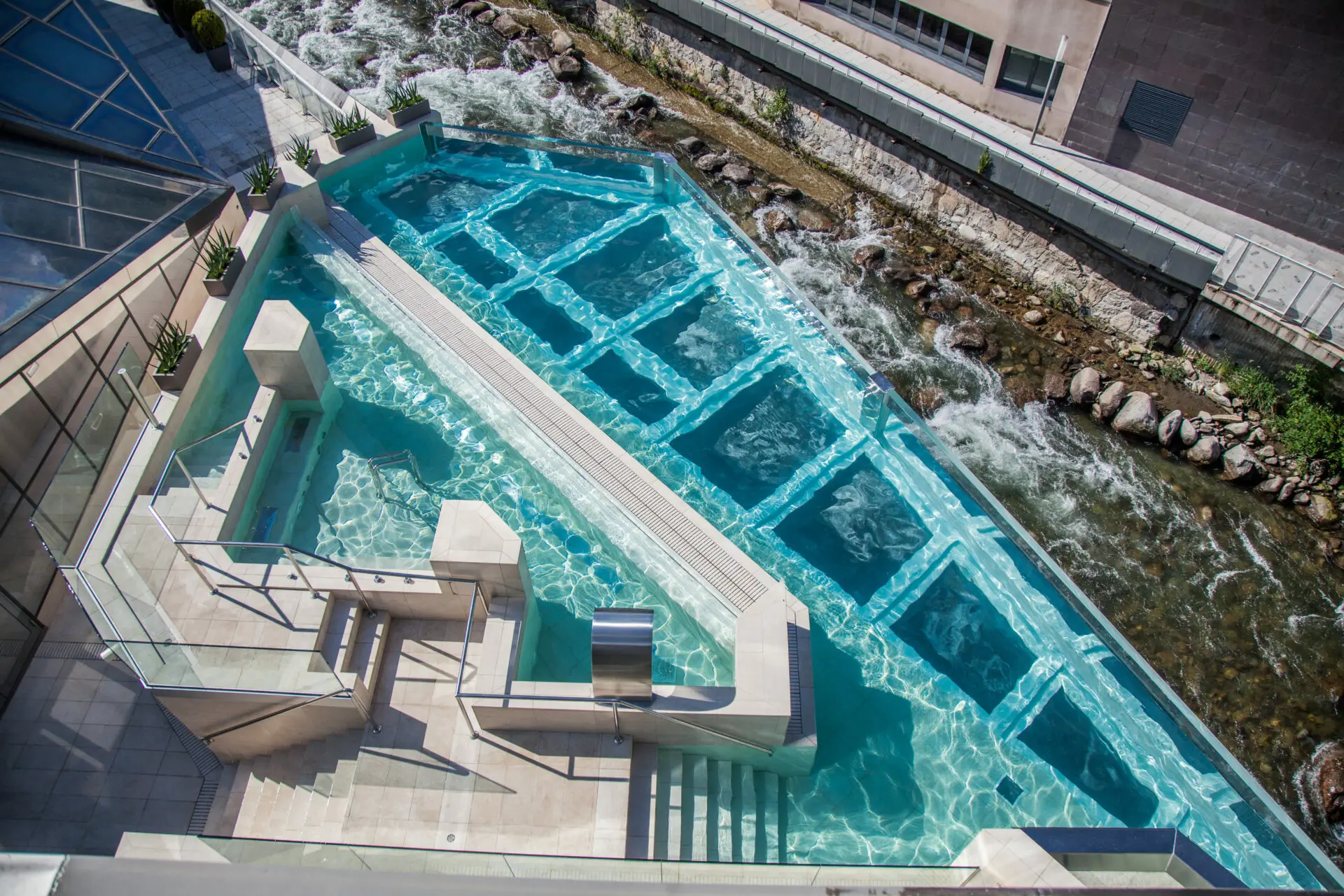
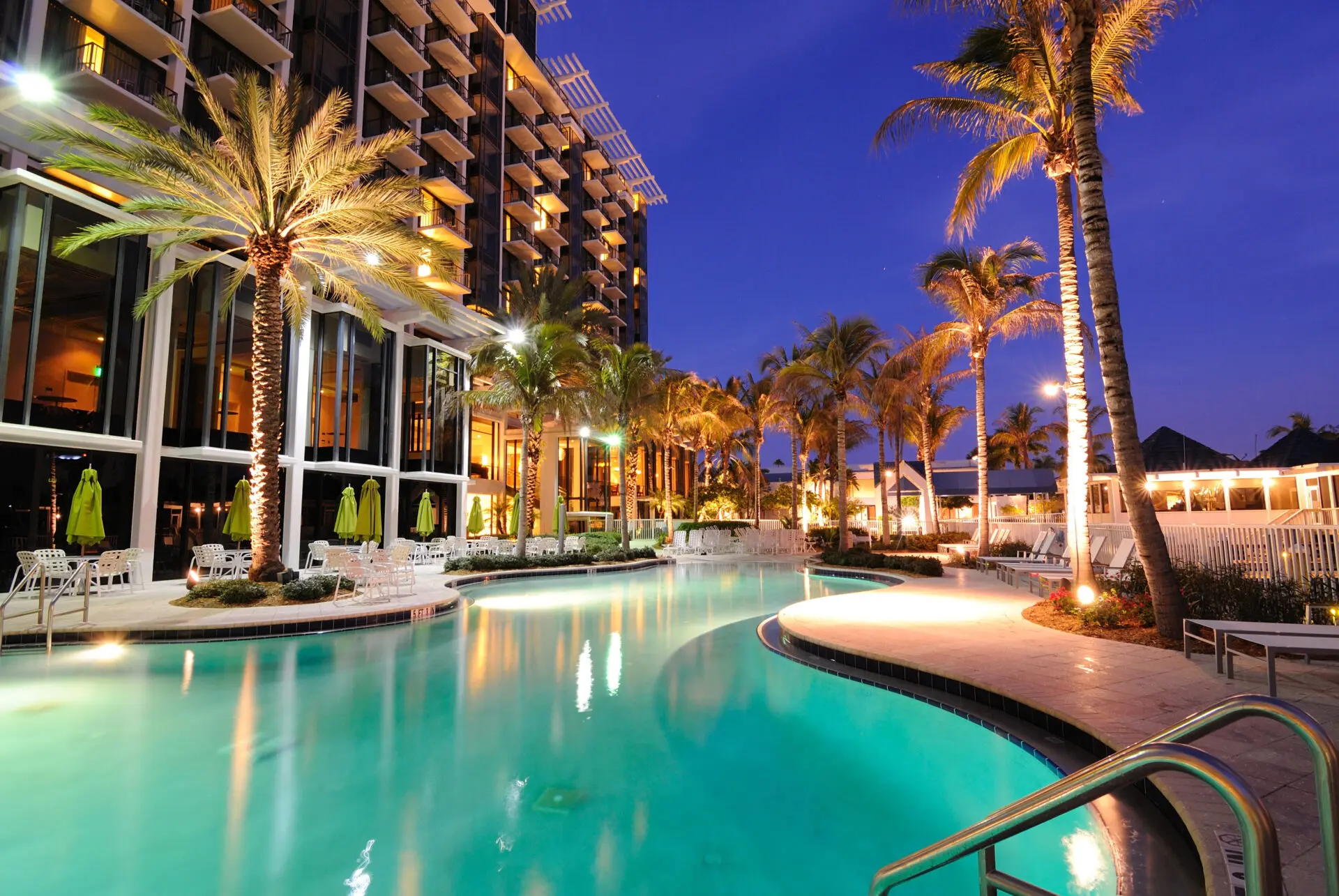
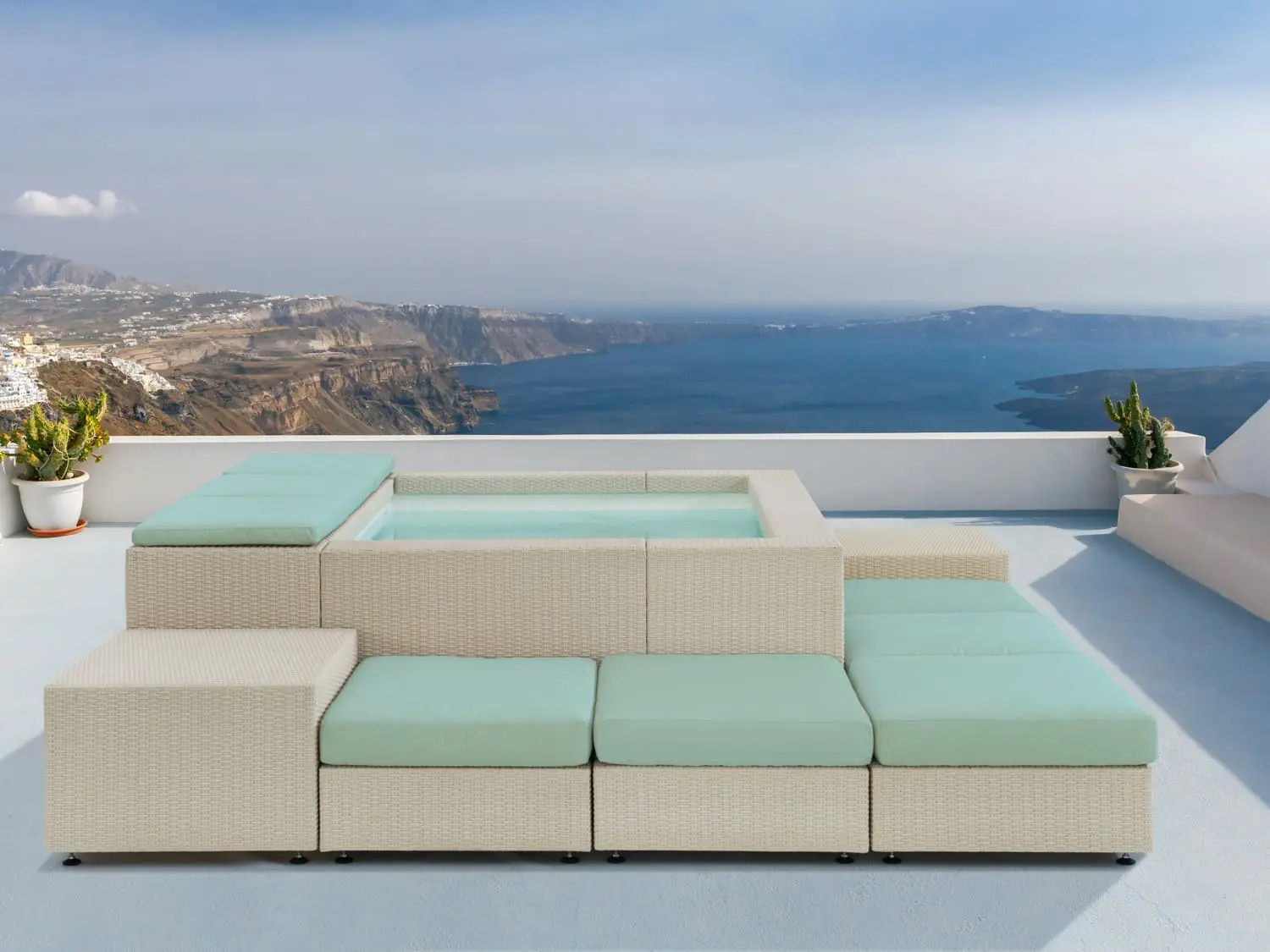
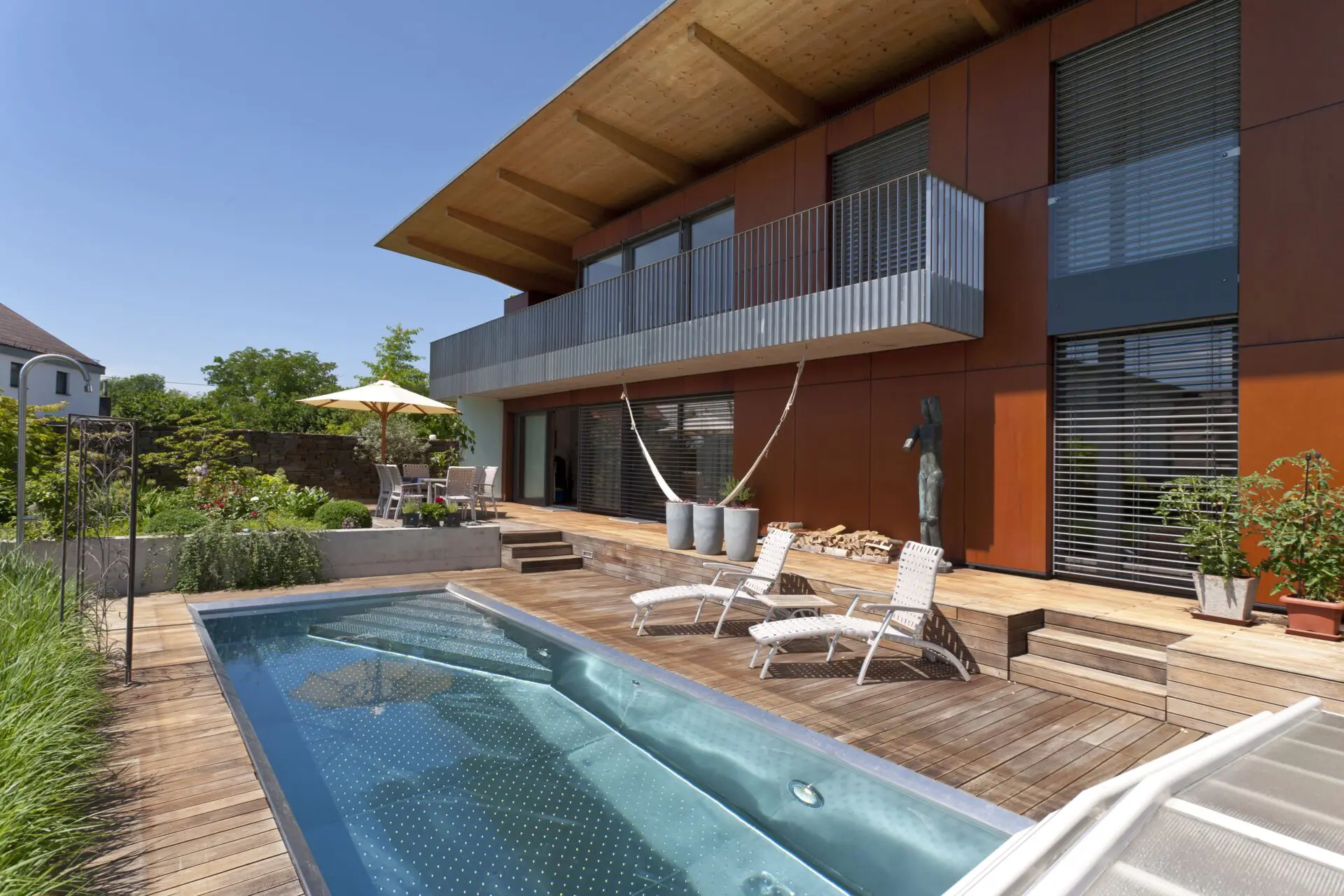
Wellness pools
Wellness pools are aquatic facilities aimed to deliver a relaxation experience to users through different designs and features. Although they can be placed in wellness centres and spas, these can also be found inside hotels, resorts, sport clubs or fitness centers.
Vitality pools are usually the central focus of wellness facilities and offer a wide variety of functions and opportunities to relax. They combine water effects, such as waterfalls or cervical massages, with air effects, such as hydromassage beds, providing numerous healthy benefits. They usually feature a pleasantly warm temperature of 34-36° as well as a comfortable depth of around 1.20 m.
A children’s wellness space is a safe playground zone and a first introduction to the world of wellness for children. Adapted to kids’ needs with smooth rounded elements, it makes them familiar with the sort of activities and treatments they can get when they grow up. They can feature small thermal lagoons, hot tubs, water games, saunas adapted to them, etc.
A floatation therapy room welcomes customers with a sensory deprivation tank, a water tank where they can relax to refill the energy. In a floatation tank, there is no sound or light, and clients immerse themselves in water with Epsom salts.
Hot tubs are a wellness solution perfectly suited for hotels and resorts. They can be indoor or outdoor, and can be placed as a private water feature in individual rooms in boutique style hotels or as a commercial spa service for all the hotel’s users. They feature different hydromassage effects in order to provide relaxation and hydrotherapy.
Cold plunge
Through contrast temperatures, we can provide many benefits to our body such as improving blood circulation. Cold plunges stand out as an ideal option for bathing in cold temperatures after workouts or within wellness circuit sessions.
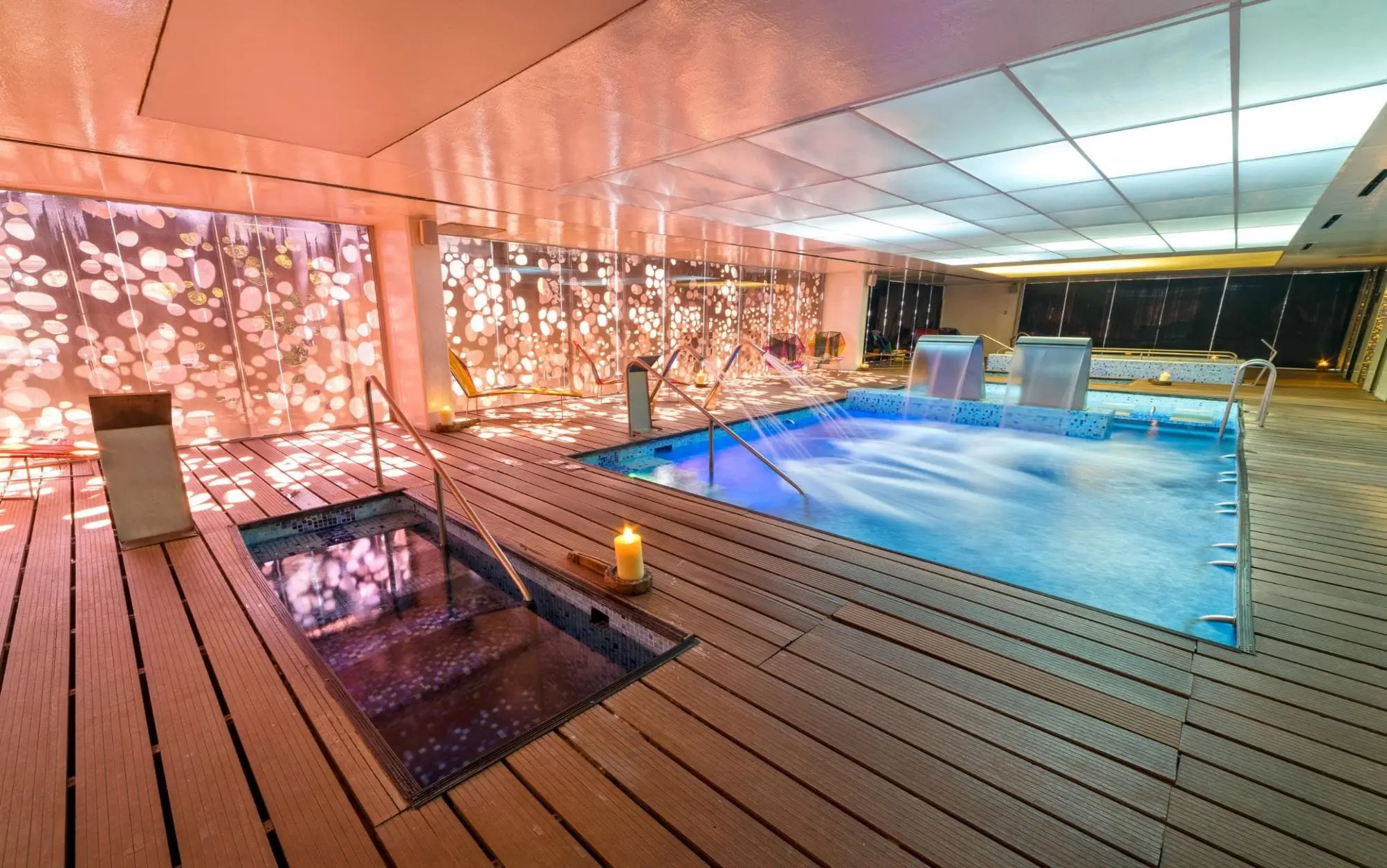
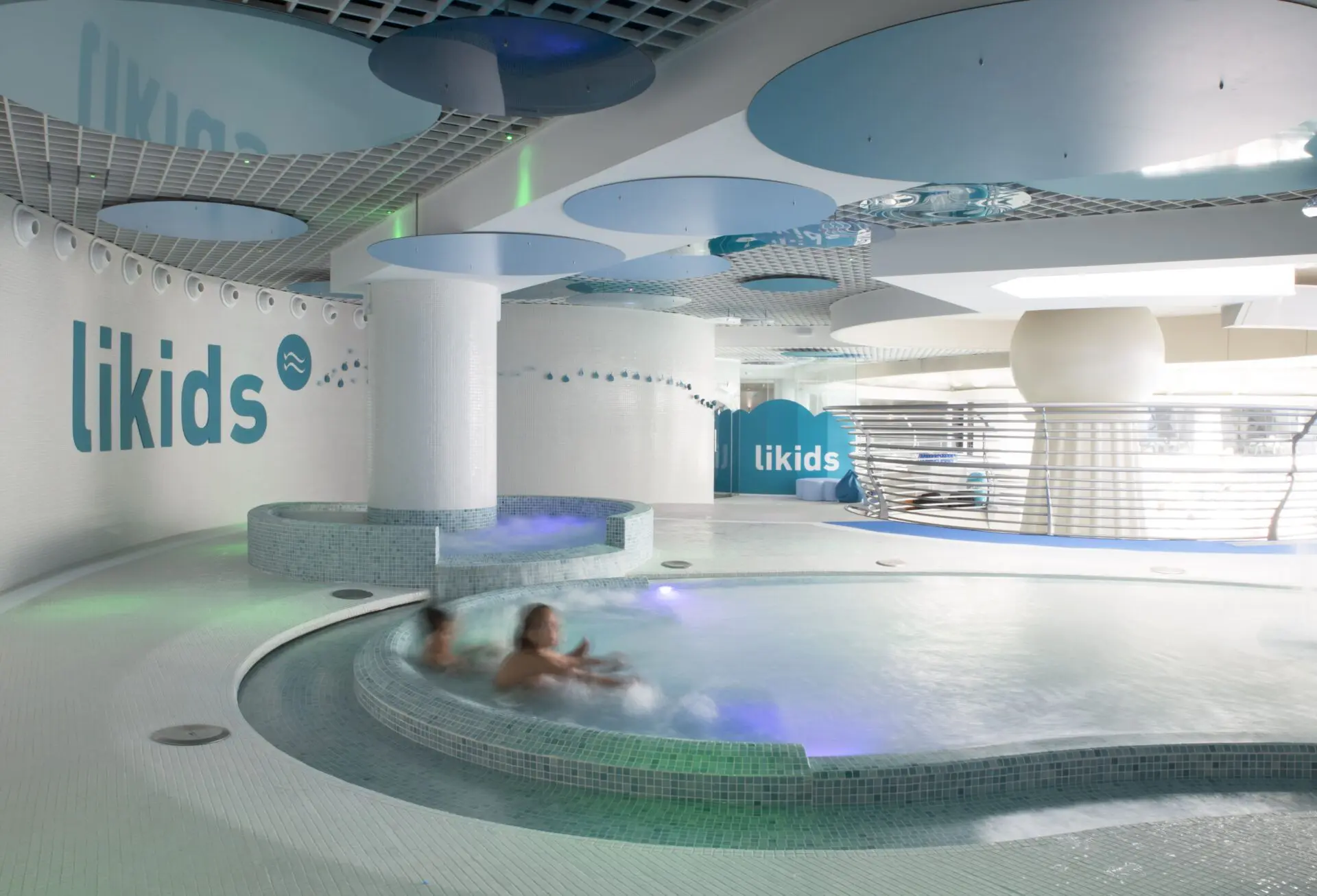
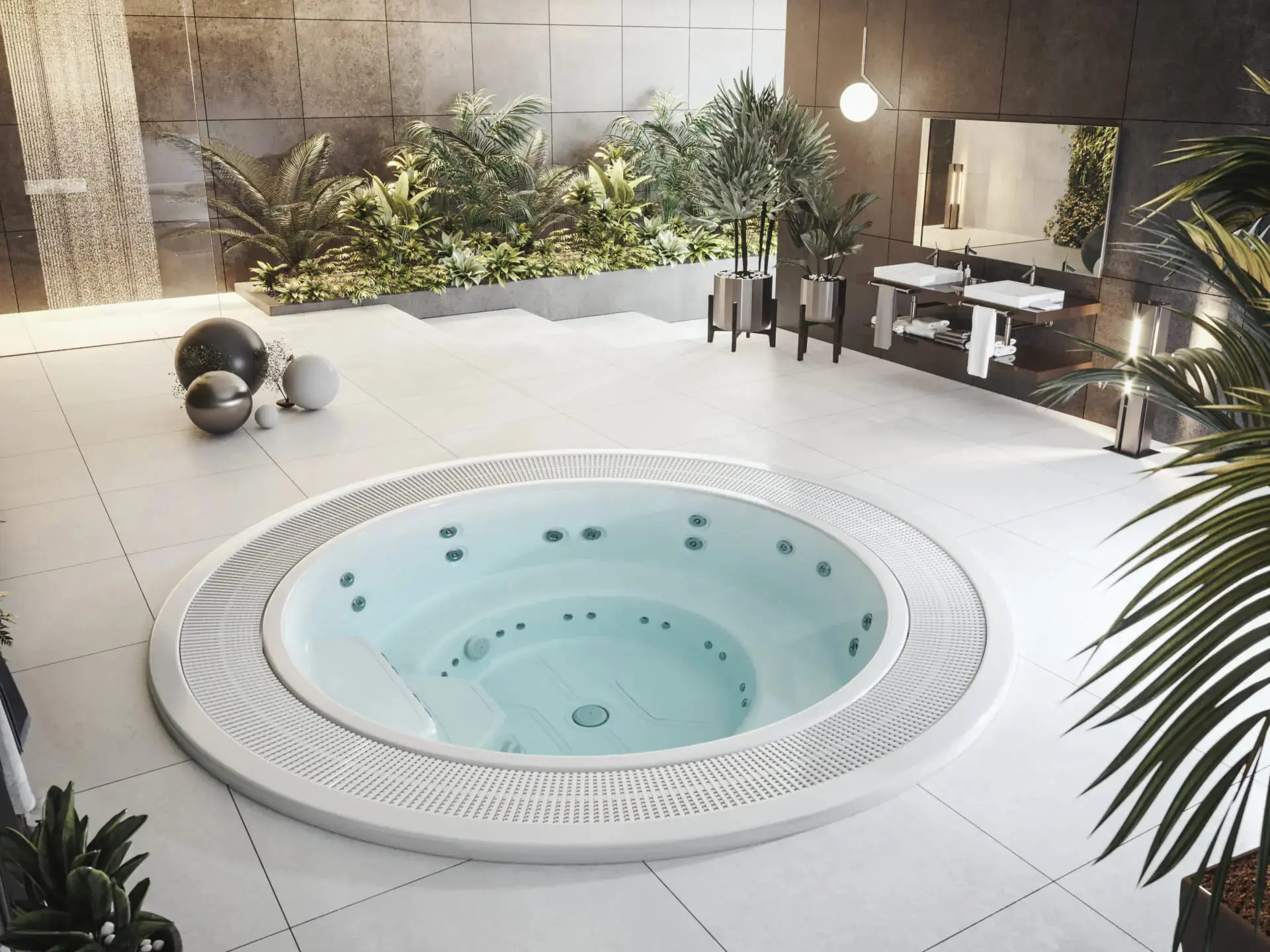
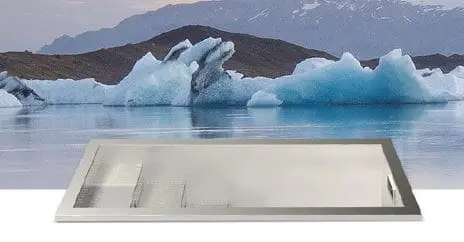
Municipal/public swimming pools
Municipal or public swimming pools are those aquatic facilities that are managed by the public administration in order to provide a water space for all types of users. They are almost the same as most of the sports club pools, with the addition of children’s pools:
Leisure pools tend to be a common type of public swimming pool aimed to be enjoyed by all families.
Lap pools are commonly used by the inhabitants of the city, town or surrounding areas to swim as a workout and fitness activity.
Children’s pool : almost all municipal swimming pools tend to include a smaller and less deep pool adapted for kids. Parents can then relax a bit more as kids are safe in these spaces. Splash parks are also a good option, but are more commonly found in water parks.
Olympic & Semi-olympic pools : it is possible that some pool facilities are integrated within municipal sport centres. We can find large swimming pools for training and workout, such as Olympic and Semi-olympic swimming pools, although they don’t need to comply with competition events regulations.
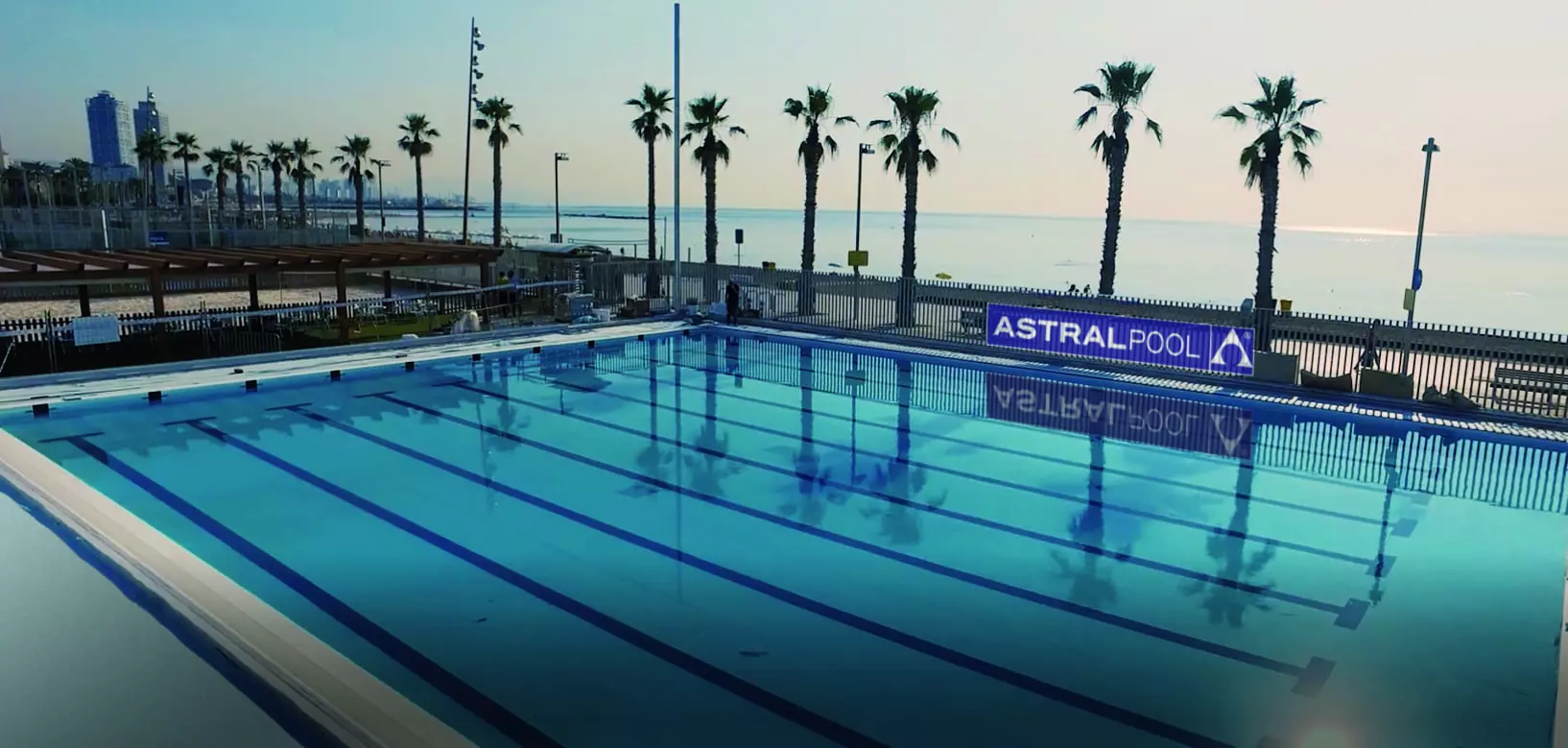
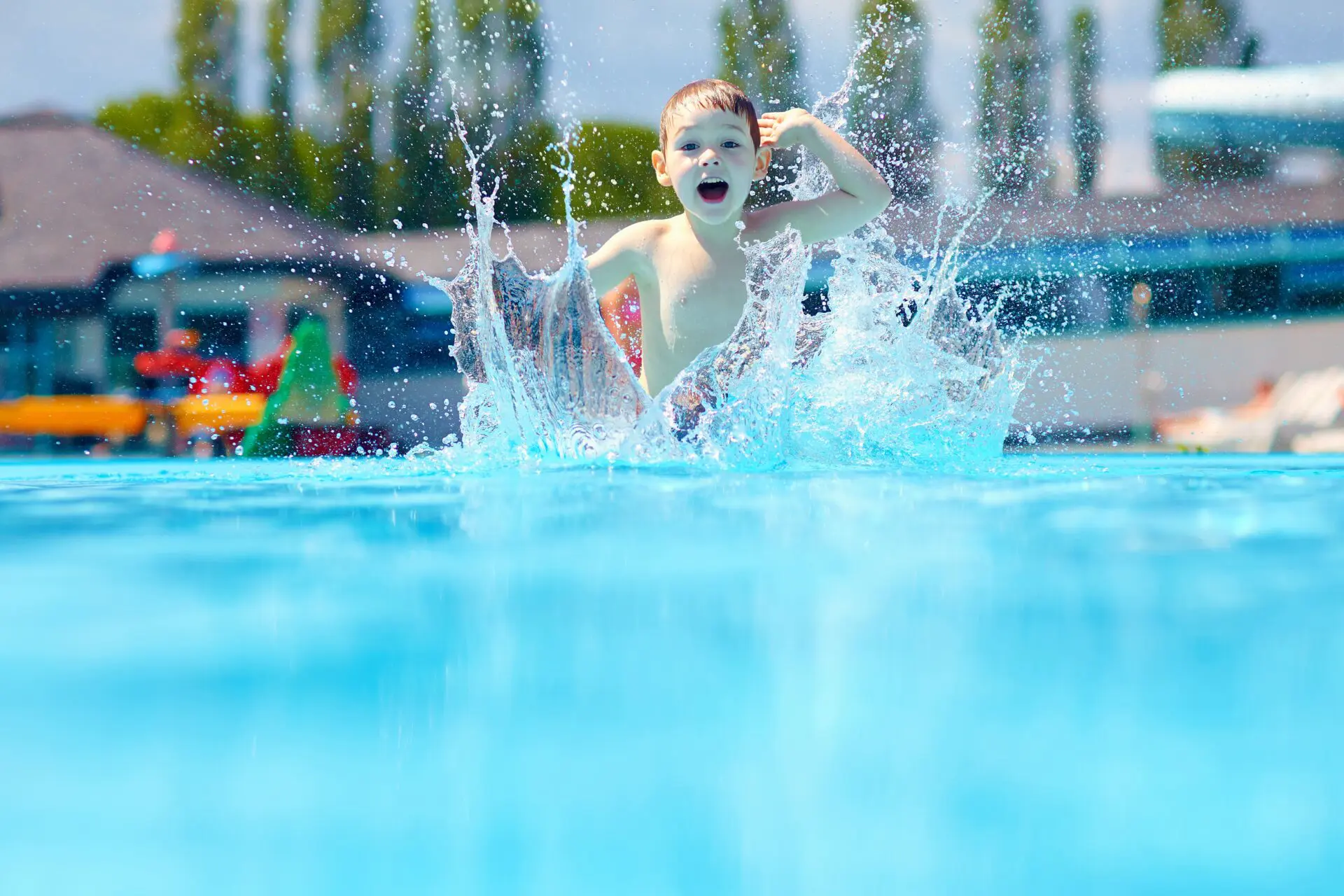
Water park pools feature many entertainment and leisure possibilities, both for the little ones or all family members. These water parks tend to be large themed spaces with many services that can be found in hotels and resorts of great extension.
This is a very specific type of aquatic facility aimed at children, where safety is the number one priority. That’s why it will always be shallow or not deep at all, and will include the necessary measures to fully guarantee a safe environment, such as soft materials. Designed to promote entertainment and fun, splash parks include elements such as interactive fountains, splashes, jets, wave areas, circuits and interactive games.
Slide pools are a must-have for water parks and are normally designed for kids, although they can also be aimed for the entire family. They open up an entire world of new experiences and fun with an extensive range of sizes and slide configurations to choose from. Like splash parks, they can be designed along a homogeneous theme in order to provide an even more immersive experience.
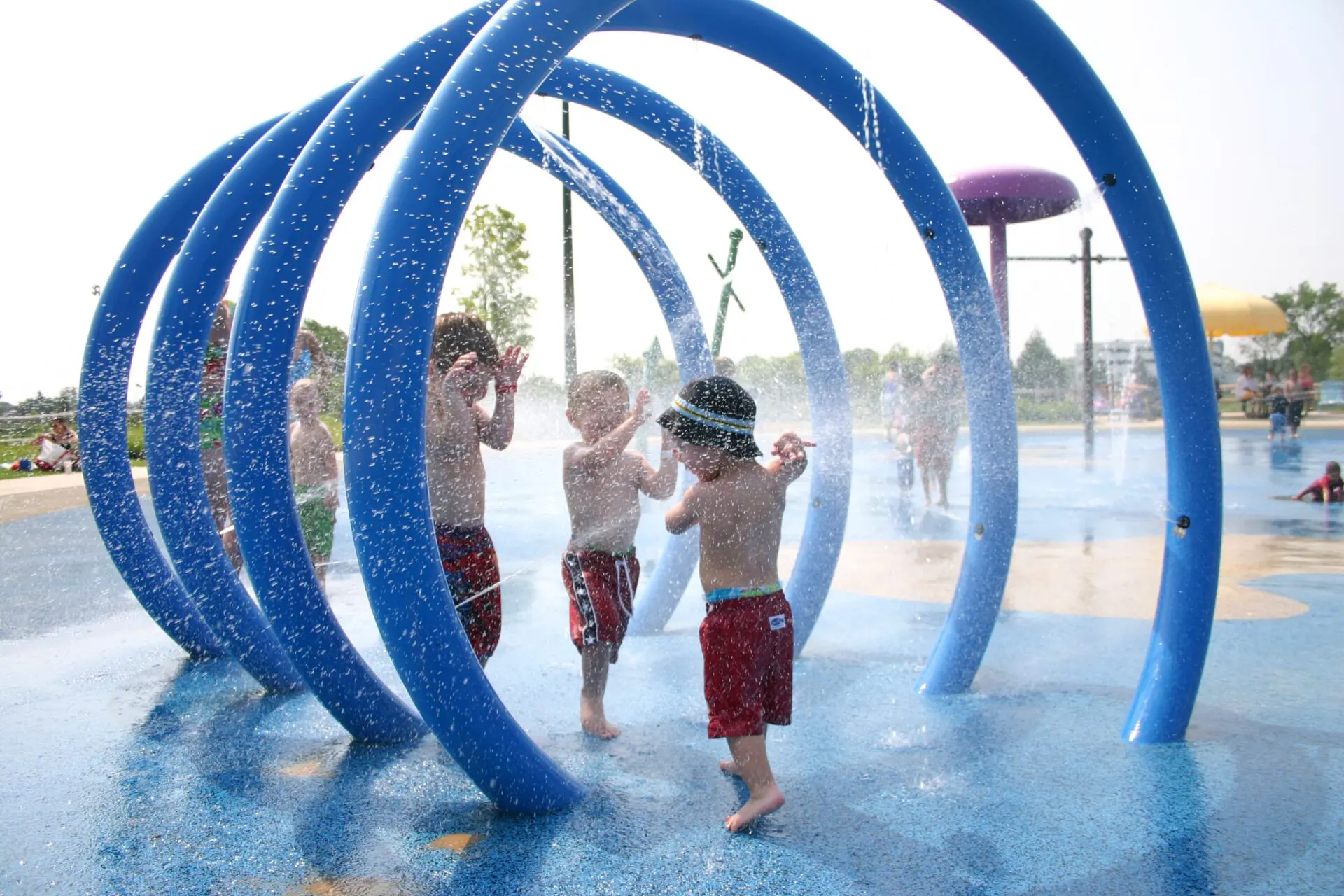
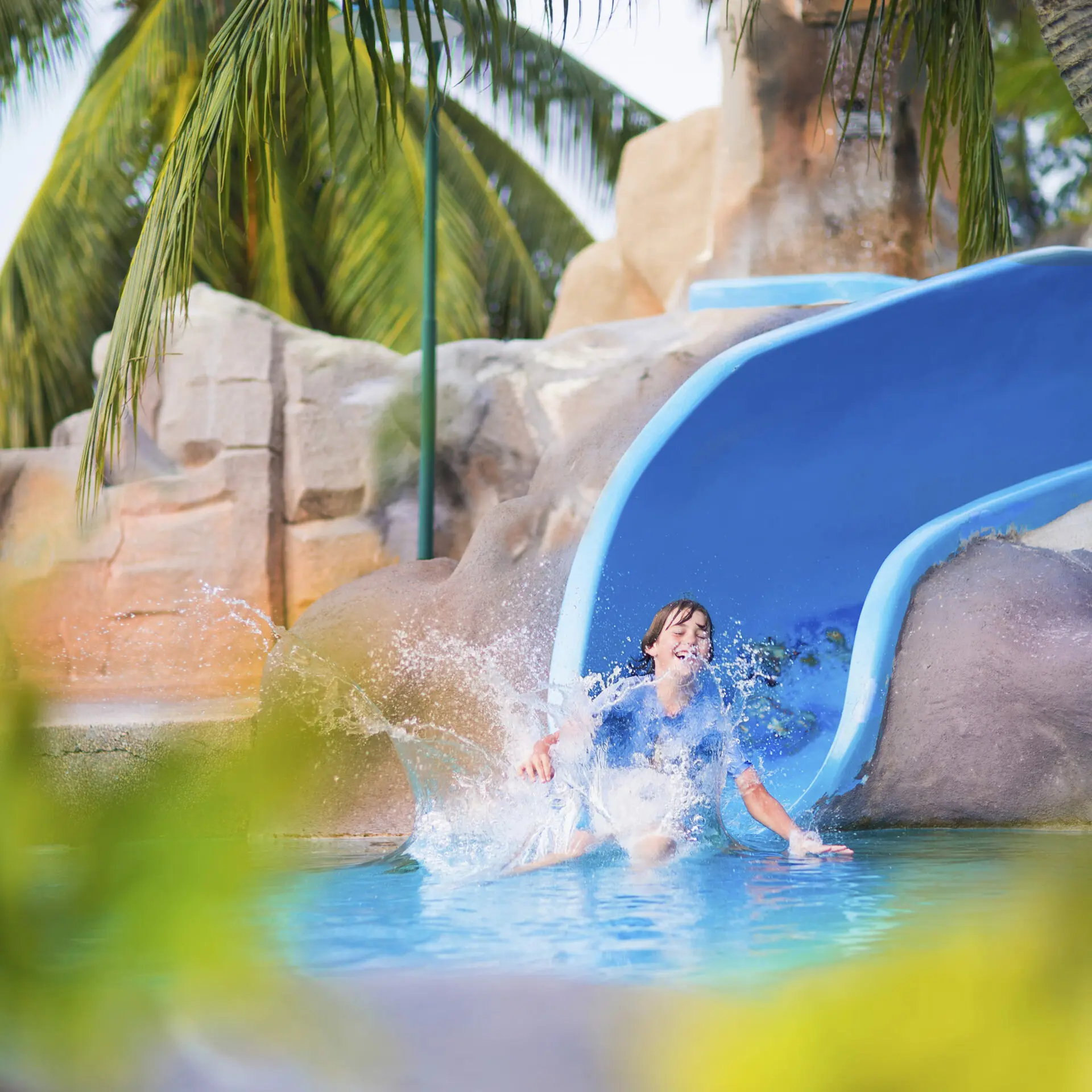
Special event pools
For special aquatic events that can be featured on the street, such as surfing, wakeboarding, kayaking or windsurfing, pools need to be built during a limited period. These types of commercial swimming pools can be made with the Laghetto custom professional . This technology allows the pool to be installed and dismantled within only a few hours. These pools are also quite durable and sturdy, and can be used for a variety of activities without compromising their features or performance.
